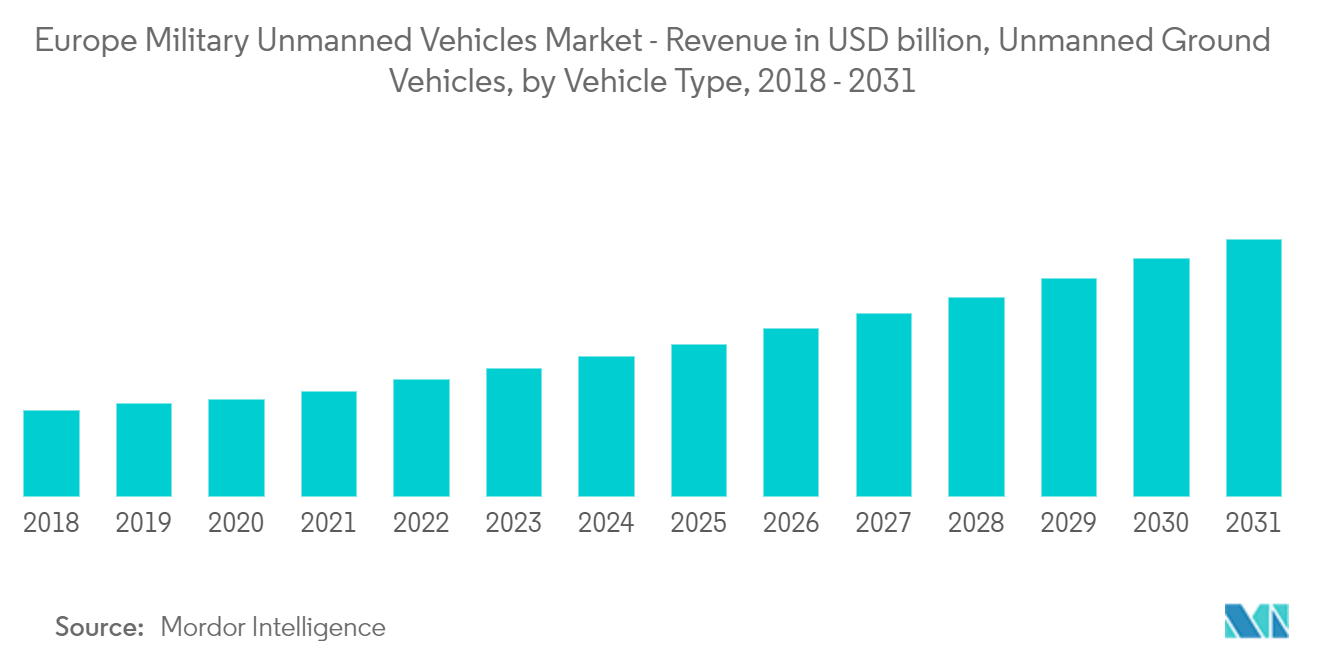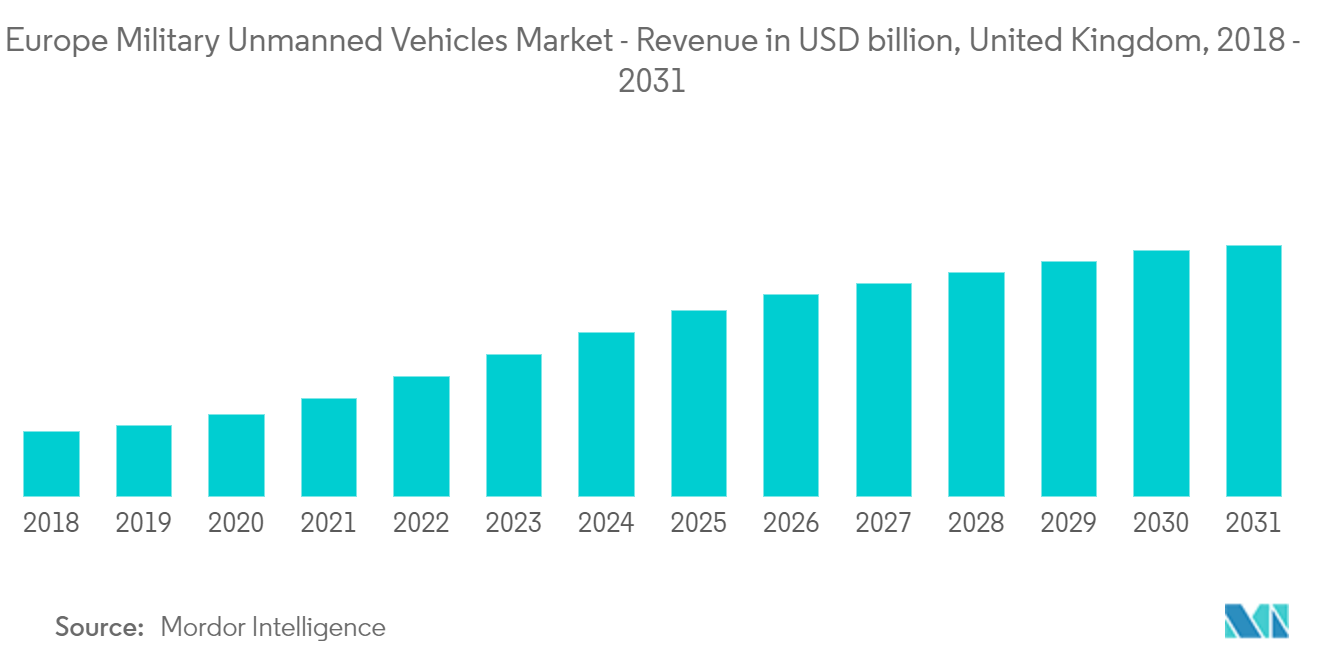Market Trends of Europe Military Unmanned Vehicles Industry
Increasing Autonomy in Land Defense Vehicles
The first truly autonomous vehicle came into existence in the mid-1980s. Since then, various research and development efforts have been undertaken, giving rise to several advanced UGV prototypes. Artificial Intelligence (AI), which has established its presence across myriad fields, has gained significant popularity for defense and security over the past decade. The integration of AI is bringing more autonomy to military applications, particularly in unmanned machines and robots. These range from autonomous aerial vehicles to unmanned ground vehicles that can function with the help of environmental sensors and AI with little to no human intervention. Autonomous unmanned ground vehicles comprise several technologies that allow the machine to be self-acting and self-regulating, sans human intervention. The technology was initially developed to support ground forces in the transfer of heavy equipment. However, the technology has witnessed significant evolution over the years, giving rise to more tactical vehicles designed to assist in surveillance or IED search-and-destroy missions.
Unmanned ground vehicles possess several benefits in terms of their size and affordability, in addition to high survivability, which makes them ideal for defense applications across the world as security threats continue to become increasingly more unconventional. In 2020, Estonia and the Netherlands signed a joint procurement agreement for seven Milrem Robotics THeMIS uncrewed ground vehicles (UGVs) through the Estonian Centre for Defense Investment (ECDI). Under the agreement, Milrem will deliver four THeMIS UGVs to the Royal Netherlands Army and three to the Estonian Defense Forces (EDF). Russia announced its plan to conduct large-scale tests of the Uran-9 armed unmanned ground vehicle (UGV) in 2022. Russia has been experimenting with different combat platforms, from smaller, less expensive vehicles like Nerekhta and Platforma to larger expensive ones like Uran-9. Similar developments and procurement plans are visible even in other European countries, which will drive the growth of this segment during the forecast period.

United Kingdom Gradually Increasing Procurement of Unmanned Vehicles
In recent years, the United Kingdom has increased its defense budget and spending to strengthen its armed forces and fill the gaps in military equipment. In April 2020, the UK armed forces placed an order for four Mission Master-Cargo unmanned ground vehicles (UGVs) from Rheinmetall Canada for its Robotic Platoon Vehicle (RPV) program. The Mission Master UGV is an all-terrain, multi-purpose vehicle based on an 88 platform and has a top speed of 40 km/h and is ruggedized and fully amphibious, with the option of being fitted with tracks or chains for additional mobility. The basic platform is 2.95 m long, weighs approximately 750 kg, and can carry a 600 kg payload (400 kg during amphibious operations). The cargo version can carry payloads for missions, including logistic transport, surveillance, protection, medical evacuation, fire suppression, chemical, biological and nuclear detection, and communication relay. The UK MoD's Defense, Science, and Technology Laboratory (Dstl) has also initiated a study on future UGVs for the British Army. The consortium led by Rheinmetall BAE Systems Land (RBSL) is exploring new approaches to UGVs as part of its wider Mounted Combat Systems research project. The study also aims to demonstrate how UGV capabilities can be integrated with other crewed platforms in maneuver warfare, providing an insight into what the British Army's future force may look like. The program is also creating potential export opportunities for the UK.
The UK government is also modernizing its UAV fleet. In November 2021, the UK received a new General Atomics Aeronautical Systems Inc (GA-ASI) MQ-9A Reaper UAV. This additional Reaper was purchased to ensure sufficient overall fleet hours are available to continue supporting operations and provide resilience for a seamless transition from Reaper to Protector in 2024. The RAF is due to receive 16 Protectors, although the US government has approved the sale of 26. The UK has also placed an order for nano drones that can provide the soldiers with the required intelligence regarding the threat of enemies from a distance. The UK Royal Navy is also incorporating unmanned underwater systems to conduct covert missions. Britain's Ministry of Defense is exploring options for the development of an Extra Large Unmanned Underwater Vehicle (XLUUV) to conduct missions at distances of up to ranges of 3,000 nautical miles for three months at a time for the Royal Navy. Such developments are likely to drive the growth of the military unmanned vehicles market in the UK over the next decade.


